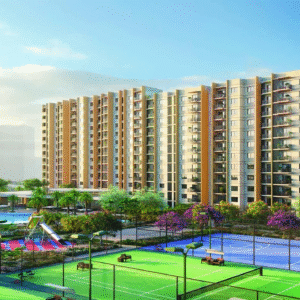In today’s construction industry, the integration of Building Information Modeling (BIM) with facade design is revolutionizing how modern architecture is conceptualized, coordinated, and constructed. Qatar, known for its ambitious development projects and rapid urban transformation, is at the forefront of adopting advanced design technologies. Among these, Facade BIM designers in Qatar play a crucial role in shaping iconic structures that blend functionality, sustainability, and aesthetics.
What is Facade BIM Design?
Facade BIM design involves the use of intelligent 3D models to plan, visualize, analyze, and manage building envelopes throughout their lifecycle. Unlike traditional 2D drafting methods, BIM-based facade design enables architects, engineers, and fabricators to collaborate in real-time using a centralized digital model. This approach ensures that every component of the facade—curtain walls, cladding, windows, shading systems, structural supports, and materials—is accurately represented, coordinated, and optimized before construction begins.
With BIM, facade designers can simulate real-world conditions such as sunlight exposure, wind loads, thermal insulation, and energy performance. The result is a more efficient, sustainable, and cost-effective building facade that aligns with both client expectations and environmental standards.
Why Qatar Needs Advanced Facade BIM Designers
Qatar’s architectural identity is rapidly evolving with high-rise towers, luxury hotels, cultural landmarks, and world-class stadiums. The facade is not only the visual identity of these buildings but also a critical component for energy efficiency and occupant comfort. As climate responsiveness and smart city initiatives become more pressing, facade BIM designers in Qatar are essential for achieving:
-
Climate-adaptive designs tailored to Qatar’s harsh desert conditions
-
Improved energy performance through thermal modeling and daylight analysis
-
Seamless coordination among multidisciplinary teams
-
Faster project delivery with minimized errors and rework
-
Compliance with sustainability goals, including GSAS and LEED standards
Whether it’s the glimmering towers of Lusail City, the sleek commercial complexes of West Bay, or the stadiums built for global sporting events, facade BIM design is instrumental in delivering design excellence in Qatar.
Services Offered by Facade BIM Designers in Qatar
Leading facade BIM design firms in Qatar offer a comprehensive suite of services that support each stage of the building envelope lifecycle:
1. 3D Facade Modeling
Detailed 3D models are created with precise geometry and material specifications. These models include all facade components—glass panels, louvers, shading devices, mullions, fixings, and insulation layers. Parametric modeling enables quick design iterations and customizations.
2. Clash Detection & Coordination
With multiple trades working on a single project, clashes between facade systems and structural or MEP elements are common. BIM tools detect and resolve such conflicts in the preconstruction phase, saving time and cost.
3. Thermal and Energy Performance Simulation
Facade BIM models are integrated with analytical tools to study insulation, solar heat gain, and natural lighting. This helps optimize facade performance and reduce HVAC loads, leading to sustainable building designs.
4. Construction Documentation
Automated generation of shop drawings, material schedules, and fabrication details ensures precision and clarity. This also accelerates procurement and on-site installation processes.
5. 4D & 5D BIM Integration
Time (4D) and cost (5D) data can be linked to the 3D facade model. This allows project managers to visualize construction sequences and track budget forecasts in real time.
6. As-Built Models and Facility Management
Post-construction, BIM models serve as accurate digital twins that can be used for maintenance, inspection, and facade system upgrades.
Who Are the Leading Facade BIM Designers in Qatar?
Qatar hosts a growing number of architectural and engineering firms specializing in BIM-based facade solutions. Some are local experts, while others are international design studios with regional offices. These firms bring expertise in both creative facade concepts and technical execution using state-of-the-art BIM platforms such as Autodesk Revit, Navisworks, Rhino, Grasshopper, and Dynamo.
Their teams often include facade engineers, computational designers, BIM modelers, sustainability consultants, and project coordinators—ensuring that all aesthetic, structural, and environmental aspects of facade design are addressed comprehensively.
Key Sectors Benefiting from Facade BIM in Qatar
The demand for facade BIM designers in Qatar spans across several sectors:
-
Commercial & Mixed-Use Developments: Sleek glass facades, shading fins, and dynamic skins dominate new business towers and malls in Doha and Lusail.
-
Hospitality & Luxury Residential: Hotels and high-end apartments require customized facade solutions that reflect luxury while optimizing climate control.
-
Stadiums & Cultural Buildings: Iconic projects like the FIFA World Cup stadiums have used BIM for façade engineering, especially to manage complex geometries and shading performance.
-
Airports & Transportation Hubs: Facade systems at airports are critical for daylight, acoustics, and airflow—perfectly suited for BIM-based optimization.
-
Healthcare & Educational Facilities: These structures require high-performance facades for comfort, hygiene, and energy savings, all of which can be modeled through BIM.
Challenges and Opportunities
While the advantages of facade BIM are undeniable, some challenges persist:
-
High Initial Investment: Implementing BIM requires software, hardware, and trained personnel, which can be cost-intensive for smaller firms.
-
Coordination Complexity: Managing data among multiple stakeholders demands rigorous standards and processes.
-
Talent Shortage: There’s a growing need for BIM-skilled facade professionals in Qatar, including modelers and coordinators with specialized experience.
However, these challenges are increasingly being addressed through government initiatives, private sector investment, and academic-industry collaboration. Qatar’s National Vision 2030 emphasizes sustainable urban development and smart infrastructure—an ideal setting for BIM to thrive.
Future Outlook
As Qatar moves toward more intelligent and sustainable urban environments, facade BIM designers will continue to play a vital role in this transformation. The future will see deeper integration of BIM with artificial intelligence, generative design, augmented reality, and digital twins.
Furthermore, as global green building standards evolve, BIM will empower facade designers to create adaptive, high-performance envelopes that are both beautiful and environmentally responsible.




